Many people flock to Pennsylvania in September and October to see the striking color changes of the leaves.
The Pennsylvania Department of Conservation and Natural Resources (DCNR) says Pennsylvania is the best place to see fall foliage. You can see fall foliage for longer in Pennsylvania than anywhere else in the world.
Pennsylvania is beautiful any time of year, with its many forests and waterfalls. Still, nothing beats seeing Pennsylvania during the fall season. The leaves change to all colors of reds, oranges, and yellows.
The diverse forests of Pennsylvania contain more than 100 species of trees. Most of these trees have leaves that change color as the seasons change. Read about seven of the most common color-changing trees below.
All of Pennsylvania’s woodlands are beautiful in the fall. Still, some places are more spectacular than others.
Consider staying in the town of Jim Thorpe and visiting the Pocono Mountains.
Look down upon the Pennsylvania Grand Canyon from two of the state’s most popular state parks.
Watch 21 waterfalls rush around the changing leaves on a hike through Ricketts Glen State Park.
Or, face your fears and walk the Kinzua Bridge Skywalk. Look down through the glass floor at the beautiful trees beneath your feet.
Pennsylvania Leaves Begin To Change Color In Mid-September
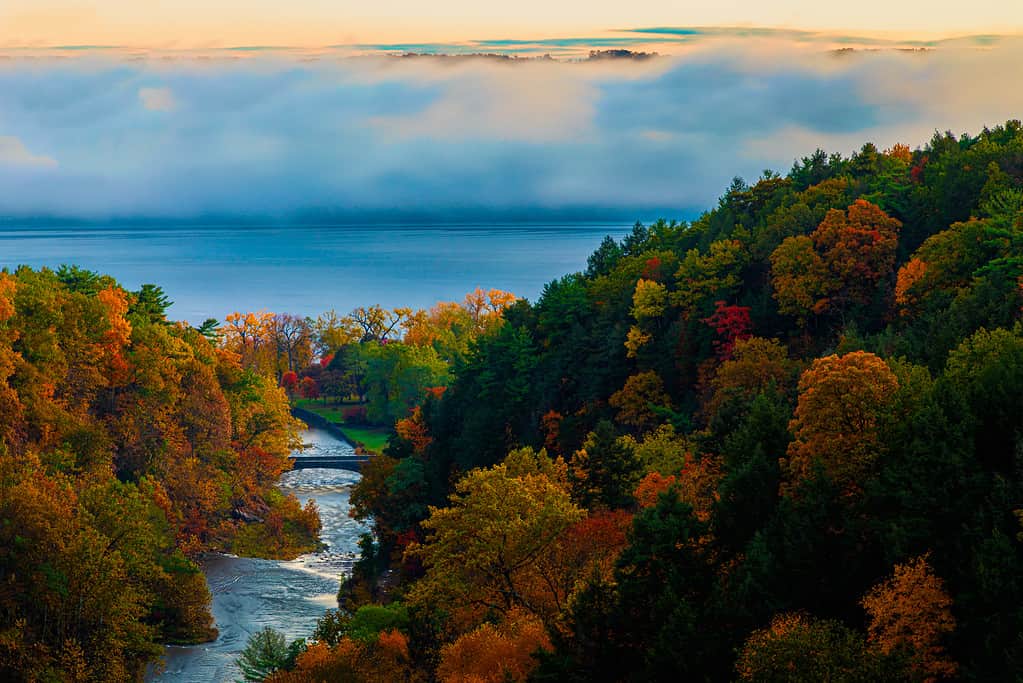
Pennsylvania is one of the best places to experience fall in the world.
©Paul Massie Photography/iStock via Getty Images
The colors of the leaves usually begin changing about mid-September. Northern Pennsylvania starts seeing color changes sooner than Southern Pennsylvania.
The exact timing depends on the location, weather, and amount of rainfall.
Without enough rain, trees experience stress. They are likelier to drop their leaves earlier.
Warmer temperatures cause trees to keep their leaves longer. Warm air makes it feel like winter isn’t coming as quickly. The trees’ “goal” is to lose all their leaves before snow and ice arrive. They can sense when the days get shorter, and the temperatures drop.
The peak time to see fall foliage is early October in northern Pennsylvania. Late October is best for southern Pennsylvania. These are the times when the leaves are most vibrant and when most leaves will still be on the trees.
Why Trees Lose Their Leaves

Leaves change color and die to help trees survive the winter.
©John_Farey/iStock via Getty Images
Trees lose their leaves to conserve their energy throughout the harsh winter months.
Getting rid of their leaves also allows trees’ trunks to hold onto moisture. Conserving more moisture prevents the trees from drying out.
With the strong wind and chill temperatures, winter storms can also be tough on trees. Without leaves, the wind passes by the trees more easily, causing them less strain.
Leaves contain hormones. During the growing season, they pass to the branches and trunk to “feed” the tree. The tree stores the hormones to use for energy.
As the days get shorter, the leaves produce less of these hormones. Fewer hormones cause stress and weaken the bond between the leaves and the branches. Once the bond weakens, the leaf breaks off the branch and blows away.
Pennsylvania Is One of 3 Places Worldwide to See Forests with Spectacular Fall Foliage
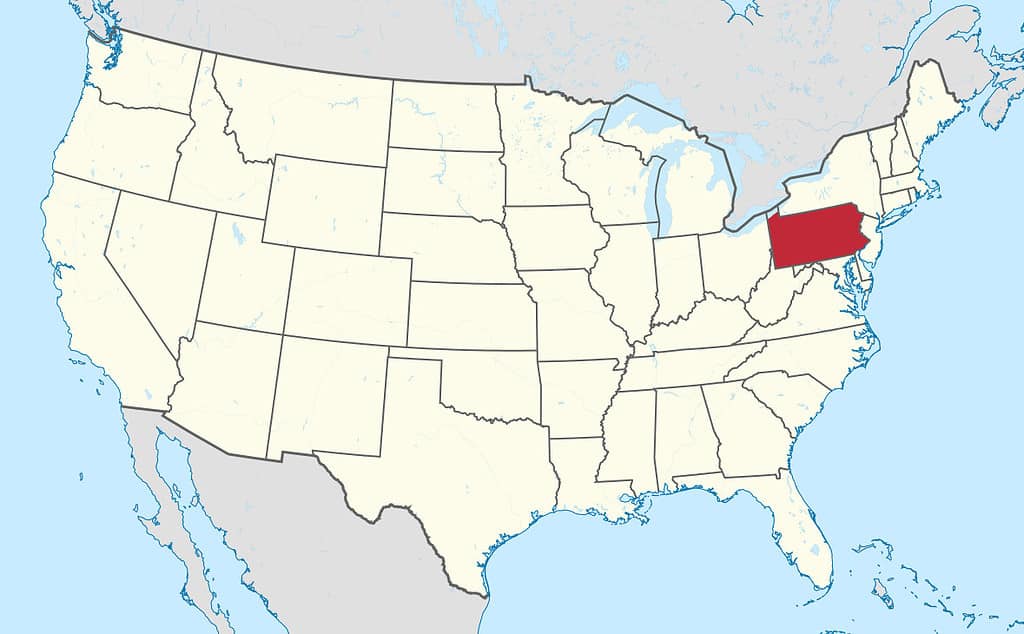
Fall lasts longer in Pennsylvania than in most other places in the world.
The DCNR says only three regions in the world support deciduous forests that show beautiful fall foliage.
Eastern North America is the only place to see beautiful fall foliage in the United States.
Check out the DCNR for an updated fall foliage map. The map shows the estimated peak time for fall foliage in each region of Pennsylvania.
Elsewhere, you can see fall foliage in these regions:
- Northeastern China
- Northern Japan
- The British Isles
- Some of northwestern Europe.
Other parts of the world have mostly tropical or conifer forests. Most conifers keep their leaves year-round. They never display the bright fall colors of dying leaves like deciduous trees do.
Pennsylvania sits in the perfect position for fall foliage. It hosts trees that only live on the southernmost mountain tops. It is also home to trees that cannot survive any further north. These many species combine to give us beautiful autumn scenes.
7 Most Common Types Of Trees That Change Color In Pennsylvania
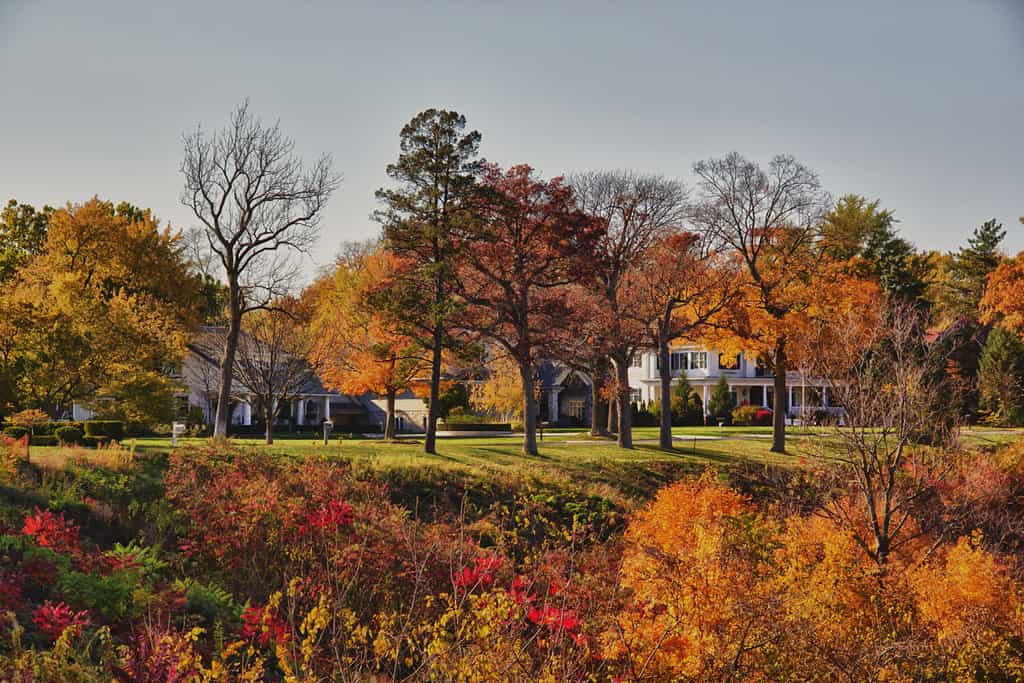
Color-changing trees produce a beautiful autumn landscape.
©Joshua Benjamin Francis/Shutterstock.com
The state is home to 134 tree species and many other shrubs, many of which change color during fall.
Below, we’ve included seven of the state’s most common types of color-changing trees.
1. American Beech
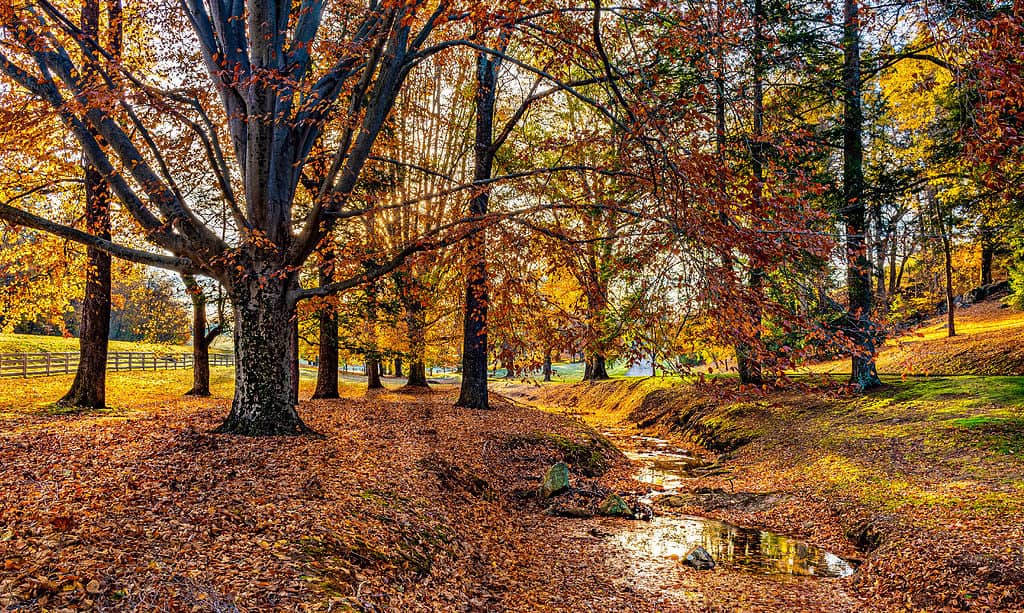
Tall American beech trees are a staple across Pennsylvania forests.
©Gerry Bishop/Shutterstock.com
The American beech (Fagus grandifolia) is a large tree that can grow 50-75 feet tall. The branches can span as far as 50-70 feet across when the tree is full-grown.
These trees are essential to Pennsylvania’s ecosystem. They are a food source for deer, bears, birds, rodents, and many others. Many of these same animals use the trees for shelter and nesting.
2. Black Walnut
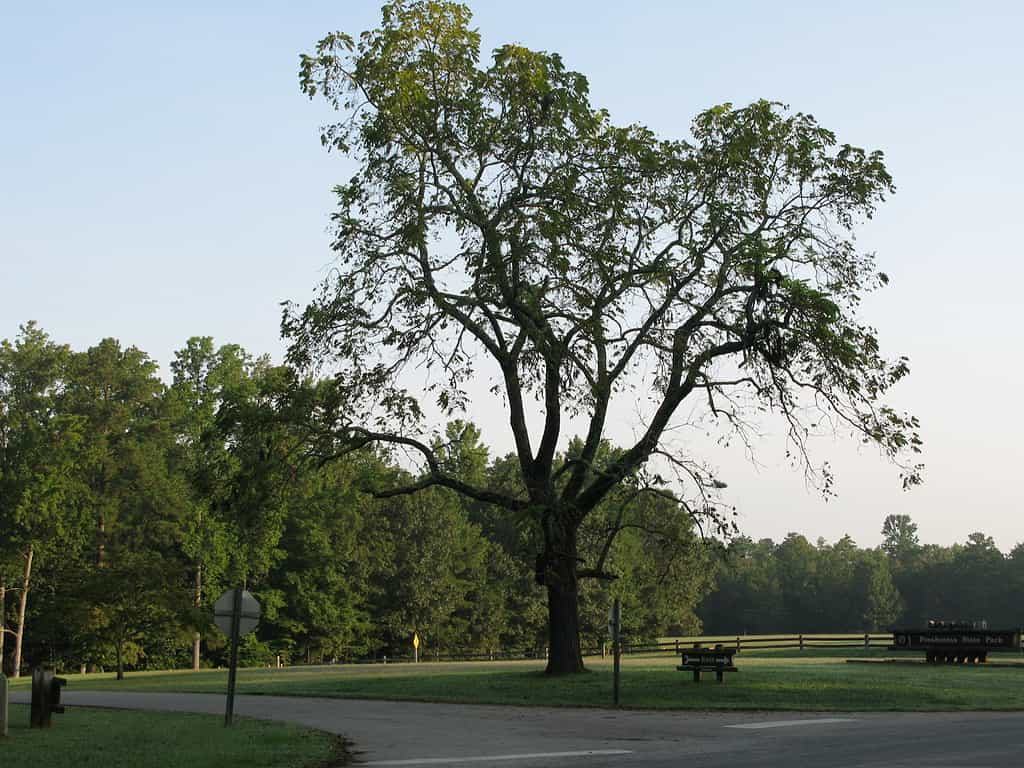
Huge black walnut trees have dark brown to black bark.
©Virginia State Parks staff/ CC BY 2.0
These trees get their name because they produce walnuts whose seeds are dark brown to black.
Their name also comes from the color of their bark, which is dark gray to black with diamond-like ridges.
These trees are exceptionally tall, growing up to 100 feet tall.
Black walnut trees (Juglans nigra) are native to North America and are very hardy. They grow well after wildfires and are resistant to many pests.
The beautiful color of black walnut wood makes it popular for use in furniture.
3. Mountain Maple
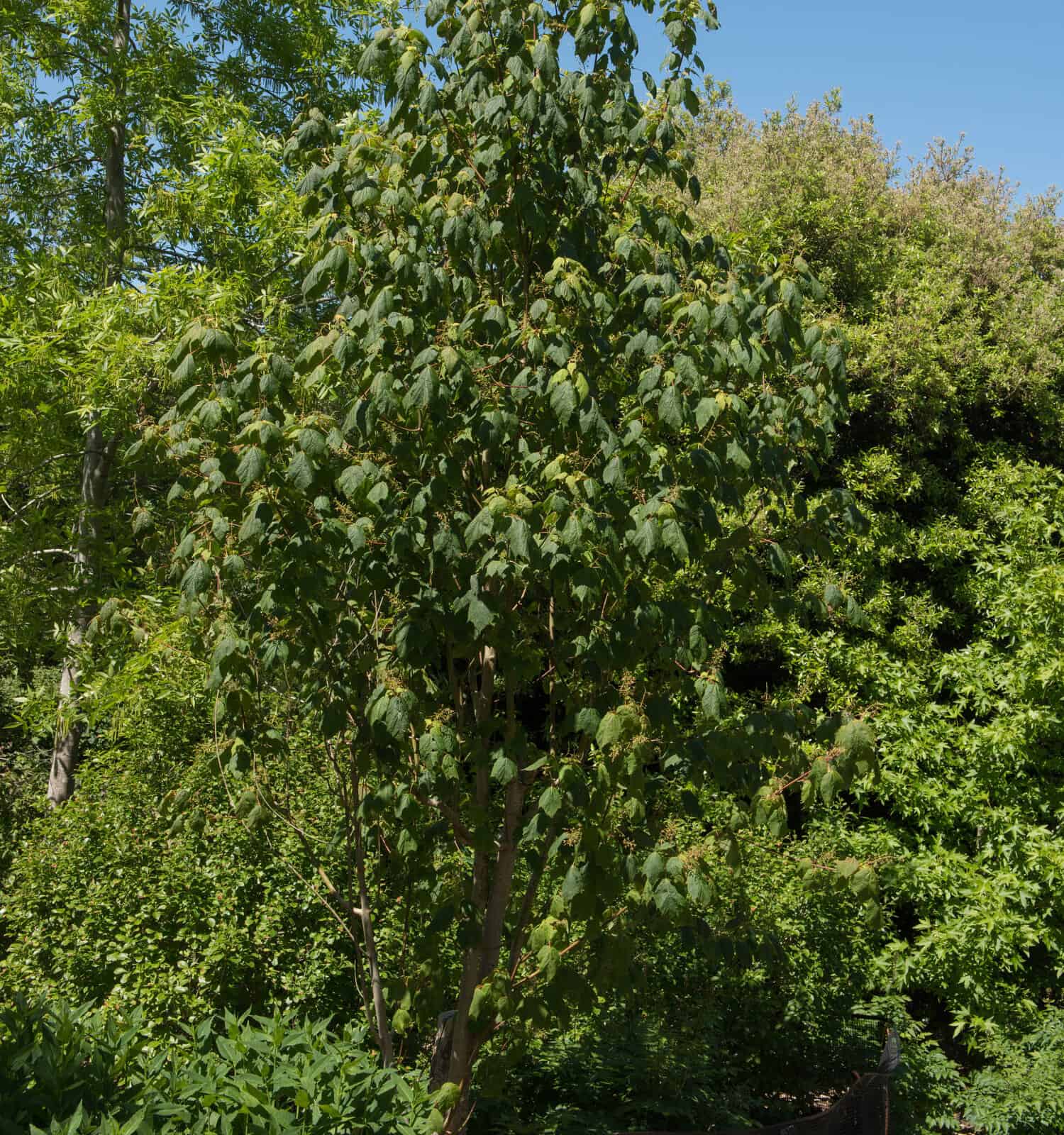
Small mountain maple trees often look like shrubs.
©Peter Turner Photography/Shutterstock.com
The mountain maple (Acer spicatum) is smaller and lives in the understory of forests. Its small stature (10 to 20 feet in height) makes it look more like a shrub.
The leaves have three lobes and finely toothed edges. In the spring, the trees display beautiful yellow-green flowers.
4. Northern Red Oak
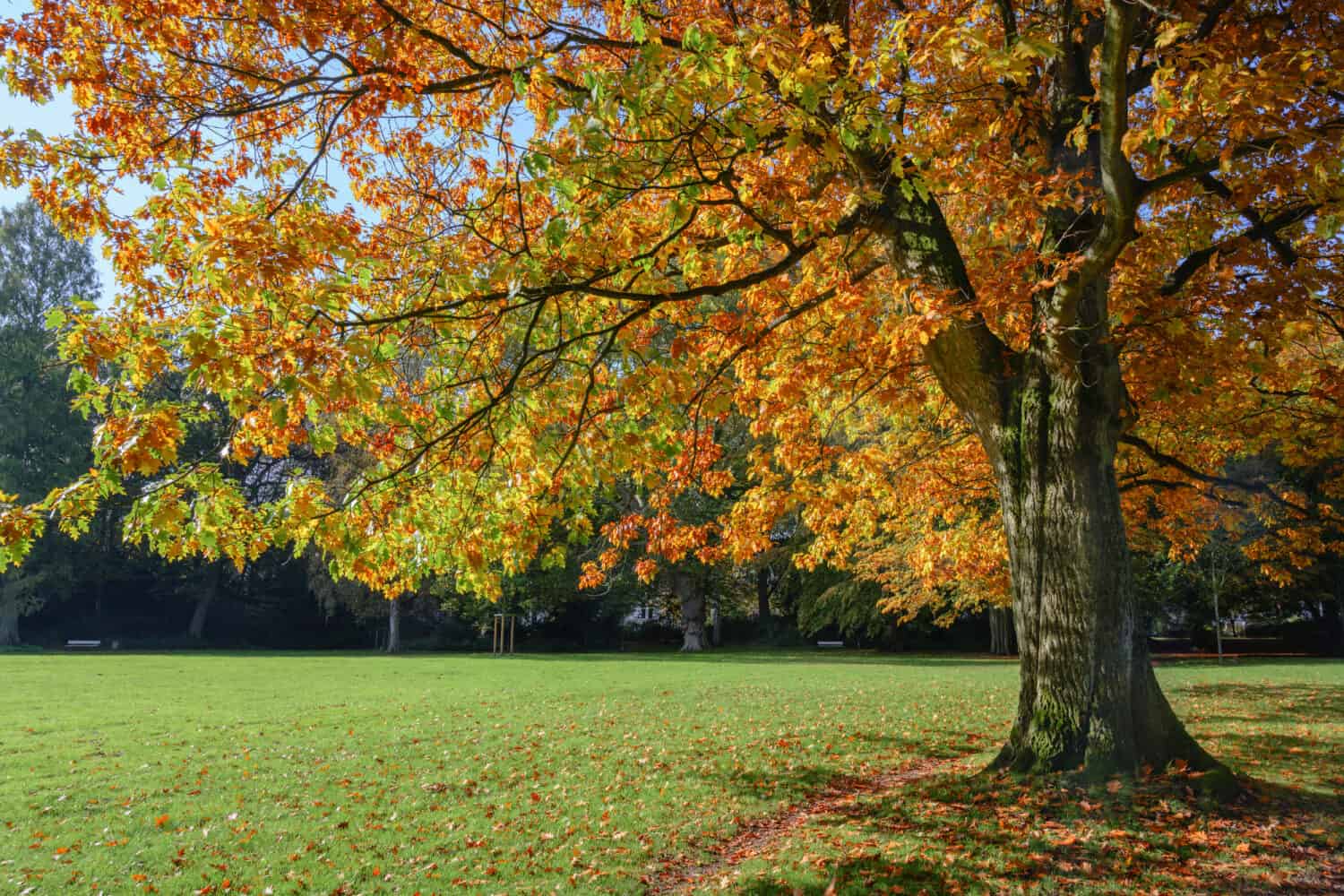
Their striped bark and striking leaves make northern red oaks one of the most recognizable trees in Pennsylvania.
©Maren Winter/Shutterstock.com
The northern red oak (Quercus rubra) flourishes in colder climates. These hardy trees can withstand significant levels of air pollution and salt.
These trees have distinctively striped bark and vibrant leaves at any time of year. When they first begin growing, the leaves are light pinkish-red. They turn dark green throughout the summer. As fall sets in, the leaves change to deep red.
5. Pawpaw
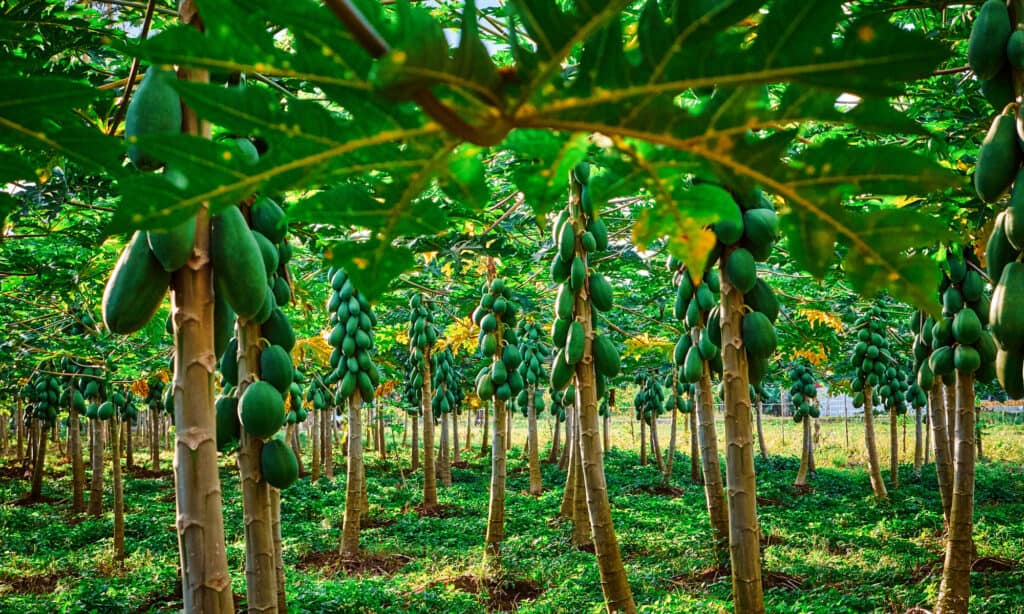
Pawpaw trees grow large, sweet fruits.
©iStock.com/julien manigand
This tree is another small, understory inhabitant. Its fruit provides food for many critters that live in the forest.
The pawpaw tree (Asimina triloba) produces the largest edible fruit in North America. The peak ripening time for the pawpaw fruit is September through October. The fruit ripens about the same time that the leaves begin changing color.
6. Quaking Aspen

Grove of golden quaking aspen trees in autumn.
©Colin D. Young/Shutterstock.com
The quaking aspen (Populus tremuloides) gets its name from its leaves. It is also known as the “trembling aspen.”
The tree has a long, slender trunk with similarly long and thin branches. Large, flat leaves hang off long stalks that attach to the branches and seem to “quake” in the breeze.
Quaking aspens are some of the most beautiful trees in the fall. They usually grow together in dense groups. Bright yellow leaves sit atop the white bark trunks in picturesque clumps.
7. White Ash
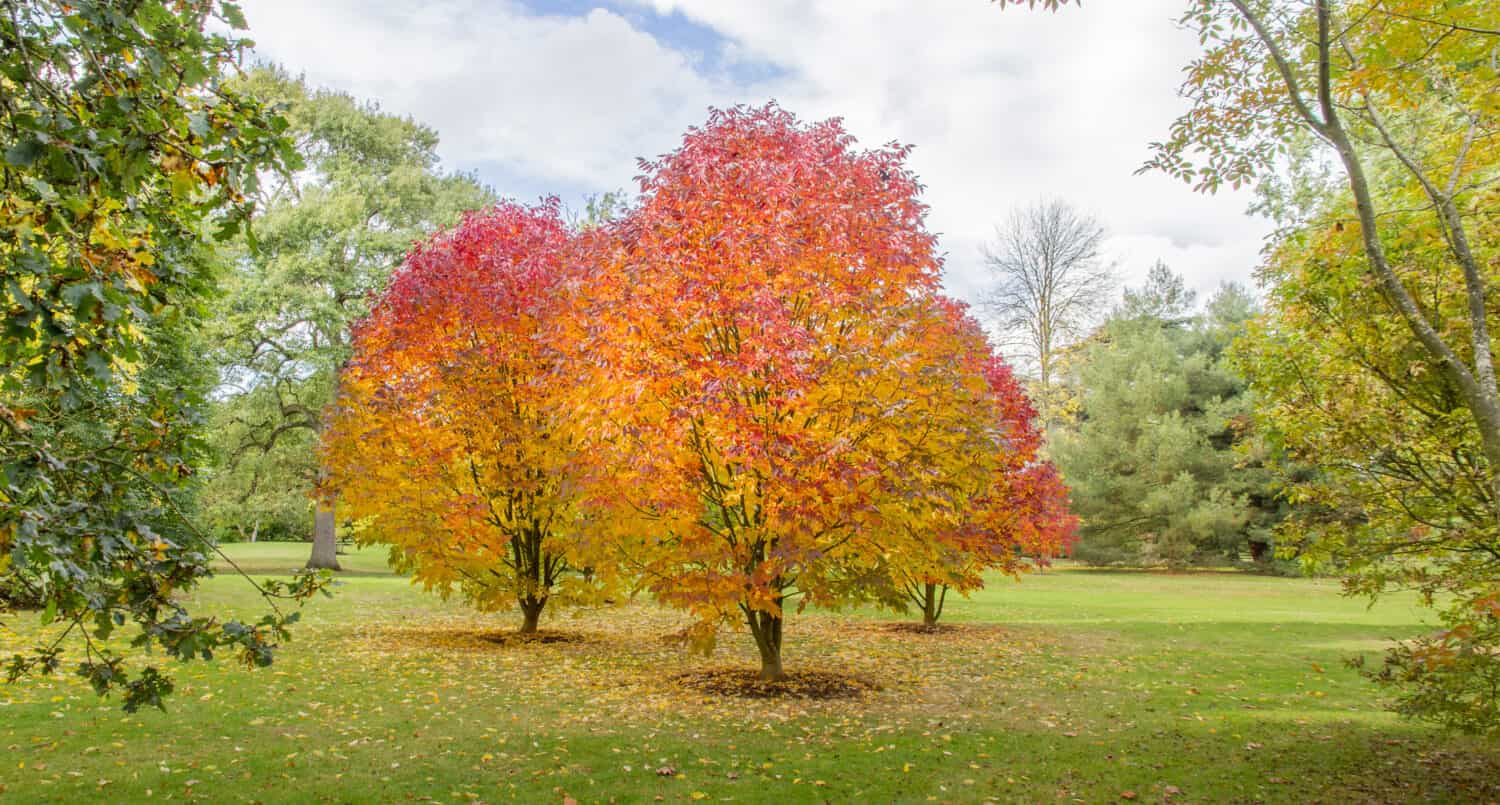
White ash trees display firey canopies of leaves in autumn.
©thatmacroguy/Shutterstock.com
These trees have large clusters of green leaves. The leaves are slightly lighter on their undersides than on top. In the fall, the leaves turn to a beautiful yellow or red.
The leaves are broad at their base and come to a short point at the top. They are large, growing 8 to 12 inches long.
The trees are huge, growing 65-100 feet tall with branches that spread 60 to 90 feet wide.
White Ash (Fraxinus americana) trees also go by the names Biltmore ash, Biltmore white ash, and cane ash.
5 Places to Visit in Pennsylvania to See Beautiful Fall Foliage
There are hundreds of beautiful places to visit in Pennsylvania during the fall.
Below are five of my favorites.
1. The Pocono Mountains
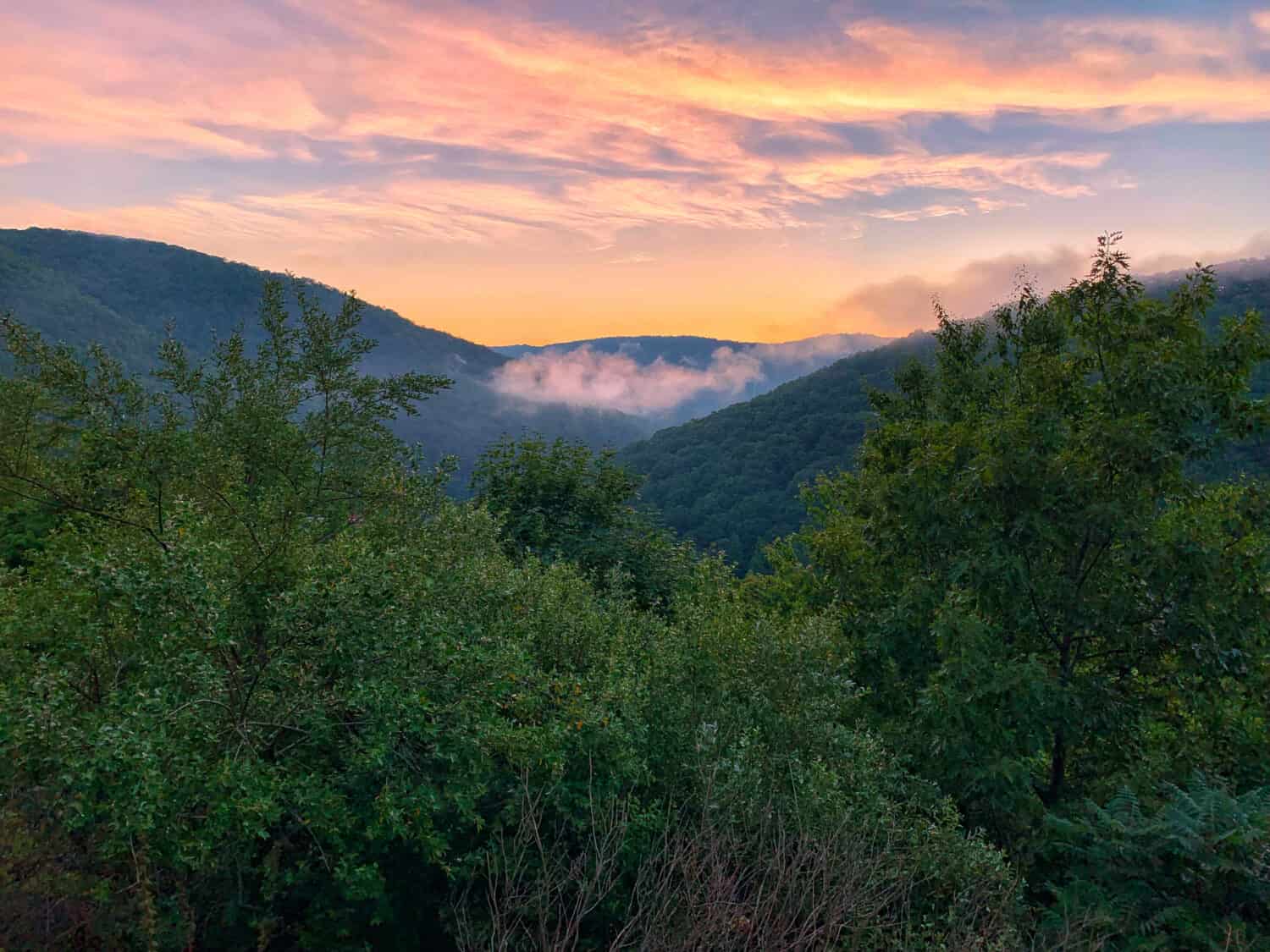
Sunset over the Pocono Mountains.
©Quinn Kampschroer/Shutterstock.com
Situated throughout northern, southern, and central Pennsylvania, the Pocono Mountains are a major Pennsylvania landmark. They are some of the best places to see beautiful fall foliage.
Visit the Poconos between mid-September to mid-October. The later in the season you go, the more vibrant the leaves will be.
Some of the best places to visit the Poconos in the fall are Camelback Mountain, Route 6, and Bushkill Falls.
2. Pine Creek Gorge (The Pennsylvania Grand Canyon)
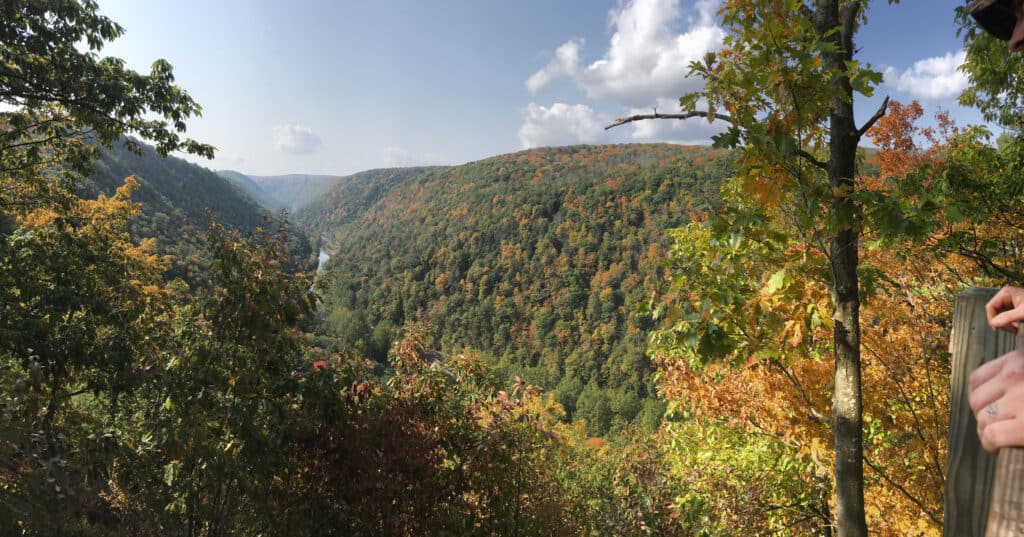
The Pennsylvania Grand Canyon is one of the most spectacular places to visit in the fall.
©iStock.com/Kaytlin King
Pine Creek Gorge is most famously known as the Pennsylvania Grand Canyon. It is best seen during the fall months.
The Pennsylvania Grand Canyon is flanked on both sides by Leonard Harrison State Park and Colton Point State Park. These parks have miles of forests, exciting hiking trails, and extravagant waterfalls.
3. Ricketts Glen State Park
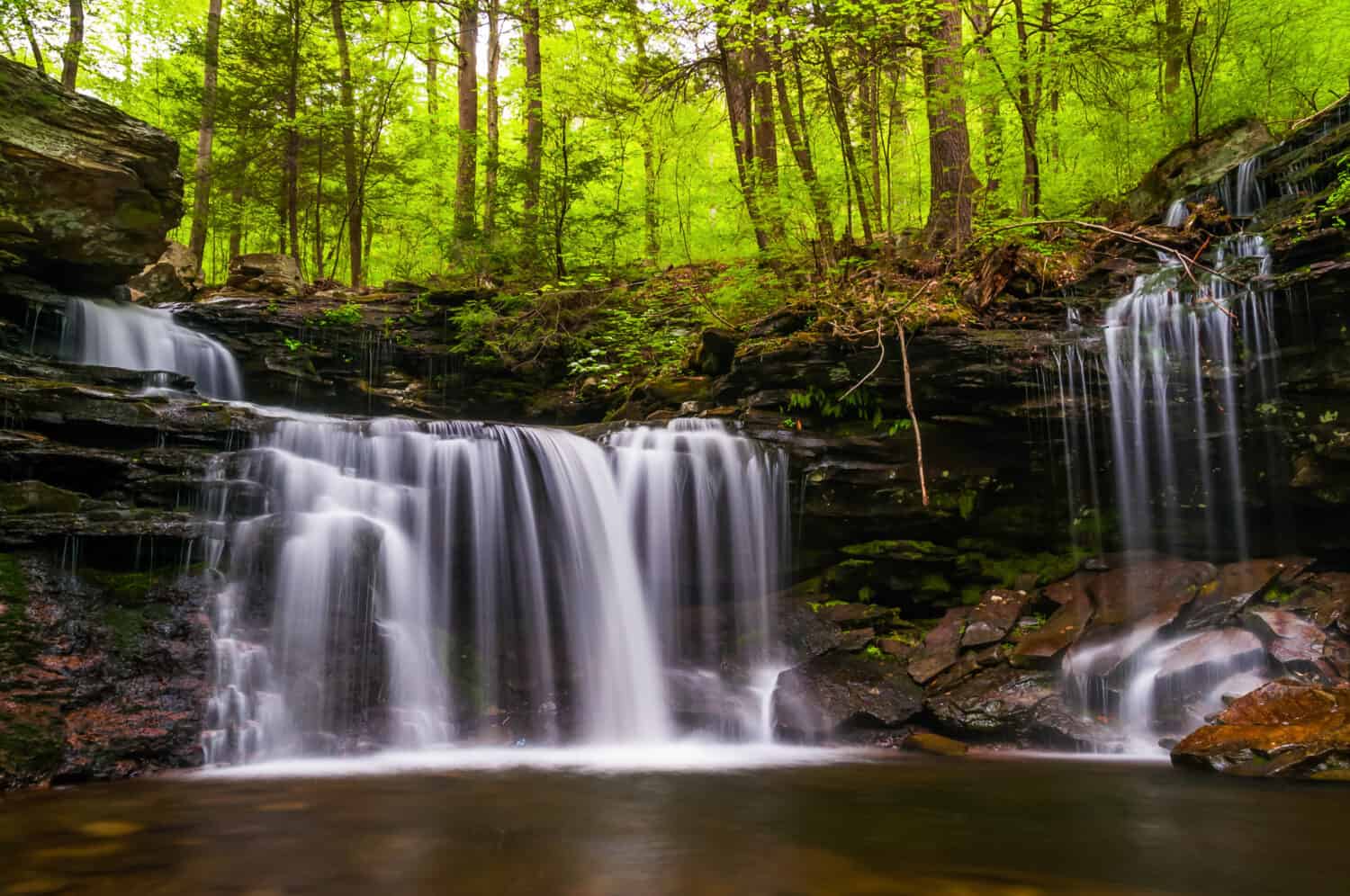
Ricketts Glen State Park is home to more than 21 waterfalls.
©Jon Bilous/Shutterstock.com
This state park is by far the best place to see beautiful waterfalls in all of Pennsylvania. Hikers can see 21 waterfalls along a single trail, ranging from 11 to almost 100 feet tall.
The waterfalls are even more lovely to view when the trees change colors during the fall months.
During the fall season, the waterfalls usually flow more readily due to an uptick in rain. The crowds are also minimal since many people have gone back to school.
4. Kinzua Bridge Skywalk In McKean County
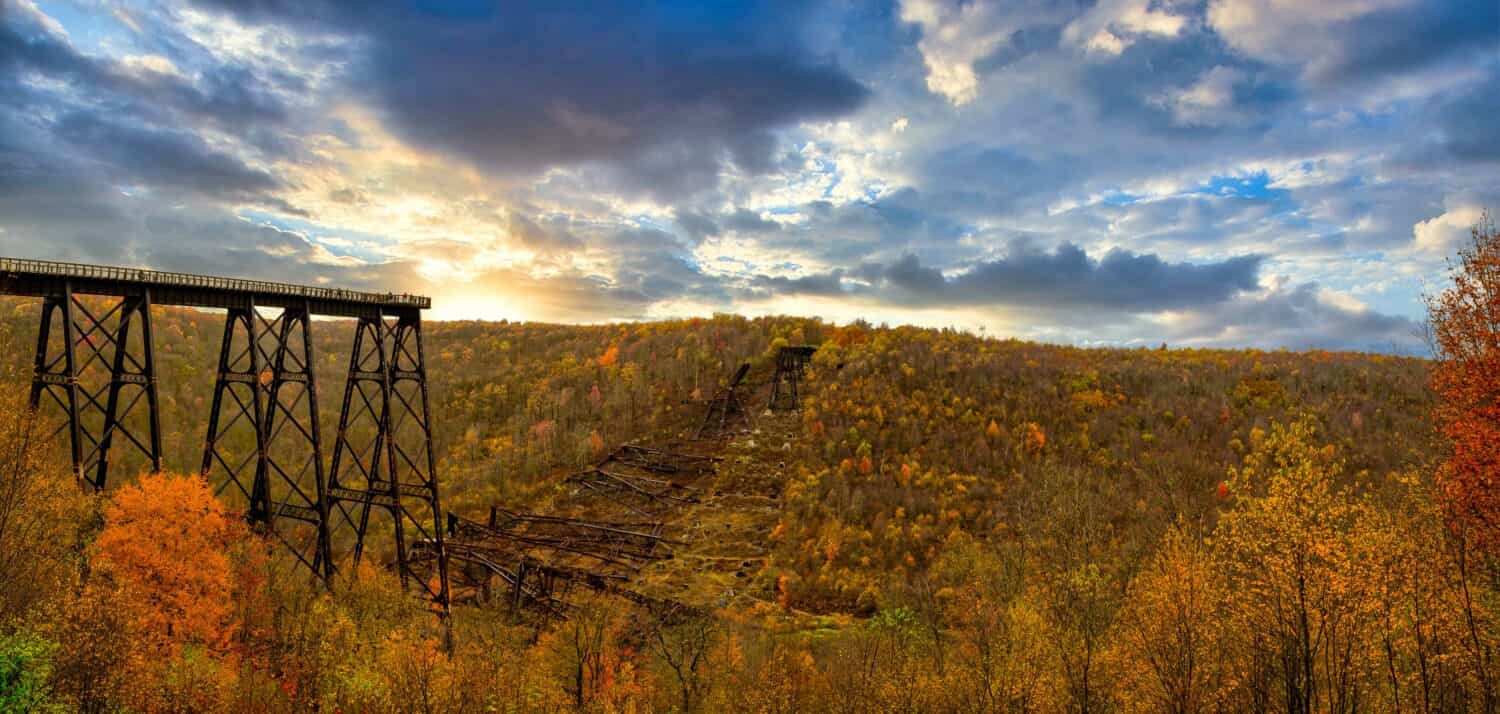
The Kinzua Bridge Skywalk is the best place to view the autumn landscape from above.
©Wirestock Creators/Shutterstock.com
The Kinzua Bridge used to be the longest and tallest bridge in the world. Unfortunately, a tornado destroyed 60% of the structure in 2003.
Rather than rebuilding the entire bridge, the structure became an overlook. Visitors can view the spectacular mountains surrounding it.
The skywalk stands 225 feet above the forest floor. The floor of the skywalk even features glass panels. Visitors can look down on the forest floor below them.
Culture Trip, U.K. named the skywalk “One of the World’s Top 10 Most Beautiful Skywalks and Viewpoints in the World.”
5. Jim Thorpe

Historic Jim Thorpe is the perfect town to visit for a fall getaway.
©Desha Utsick/Shutterstock.com
Jim Thorpe is a little historic town in the Pocono mountains that is perfect to visit in autumn.
Thousands of people come to the town every October. October is a great time to celebrate the town’s three Fall Foliage Weekends.
The town is also close to many nature areas and hiking trails to better experience the fall foliage.
Summary Of 7 Most Common Types Of Trees That Change Color In Pennsylvania
| Scientific Name | Height (In Feet) | |
|---|---|---|
| American Beech | Fagus grandifolia | 50-75 |
| Black Walnut | Juglans nigra | Up to 100 |
| Mountain Maple | Acer spicatum | 10-20 |
| Northern Red Oak | Quercus rubra | 60-70 |
| Pawpaw | Asimina triloba | 15-25 |
| Quaking Aspen | Populus tremuloides | Up to 50 |
| White Ash | Fraxinus americana | 65-100 |
FAQs
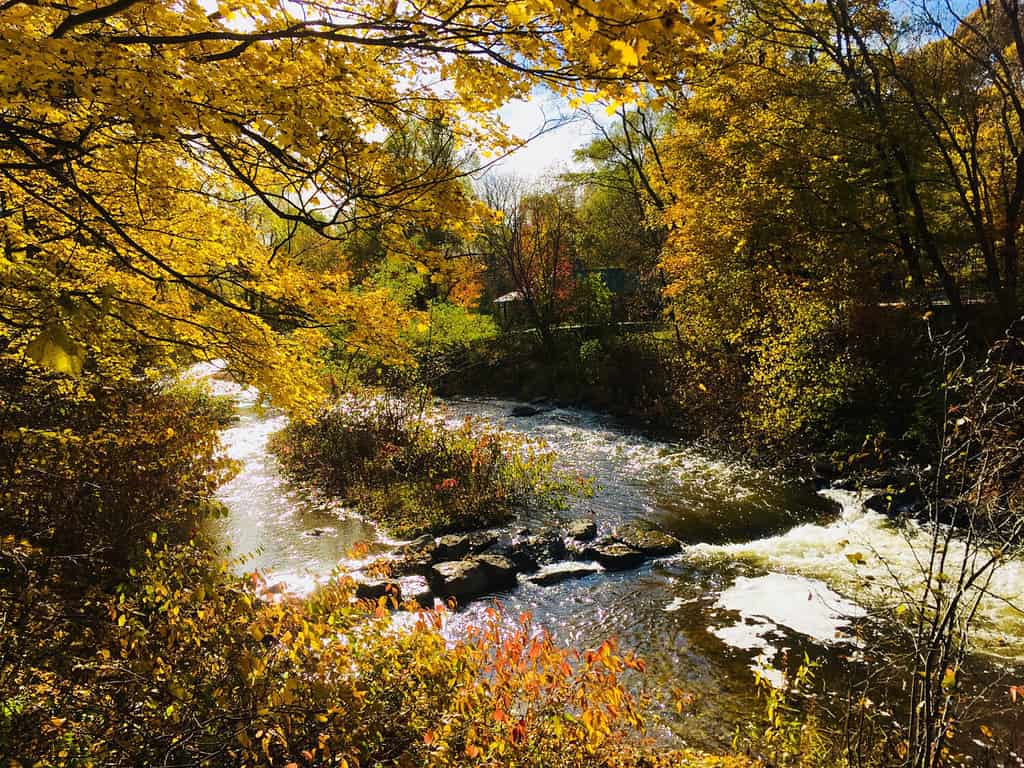
The colors of autumn are even more beautiful alongside the water.
©TheSandwich/Shutterstock.com
How long does fall foliage last in Pennsylvania?
Fall foliage usually lasts about one to two months. Exactly how long it lasts depends on the region, the weather, and the amount of rainfall.
The leaves usually stick around in northern Pennsylvania until the end of October.
In the southernmost regions, you may be able to see fall foliage until mid-November.
What is it called when leaves change color?
The changing color of leaves doesn’t necessarily have a name. Yet, the process is a part of photosynthesis.
During photosynthesis, the leaves absorb energy from the sun. They turn water and carbon dioxide into sugar and oxygen.
Leaves contain a pigment called chlorophyll, which makes the leaves green. Chlorophyll allows the leaves to absorb all waves of sunlight except for green.
Once fall begins, the chlorophyll pigments in the leaves begin breaking down. With less chlorophyll pigments, the leaves lose their green color.
Instead, they begin turning red, orange, and yellow hues. These hues appear because the leaves still contain carotenoid, carotene, or anthocyanin pigments.
The photo featured at the top of this post is © SNEHIT PHOTO/Shutterstock.com
Thank you for reading! Have some feedback for us? Contact the AZ Animals editorial team.







